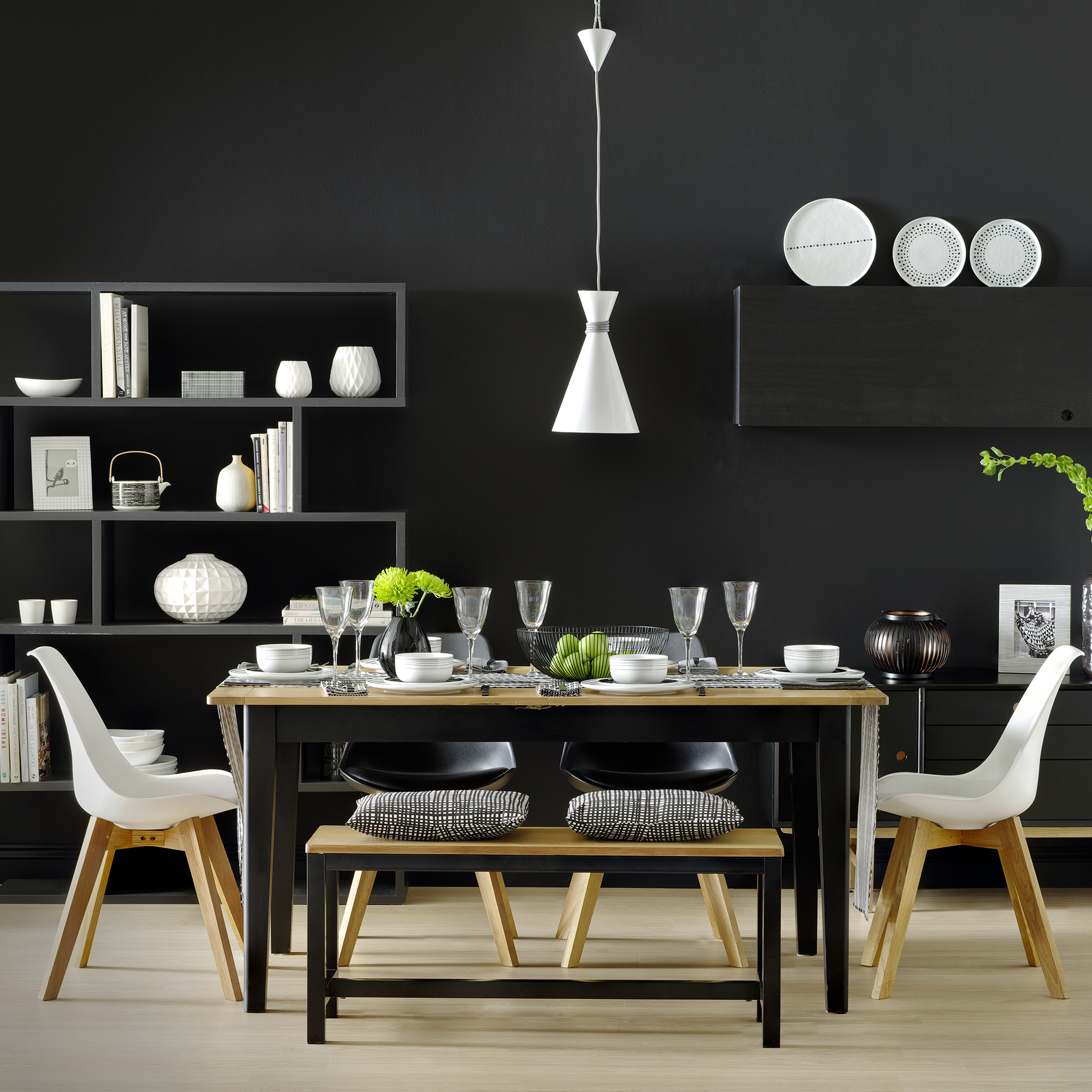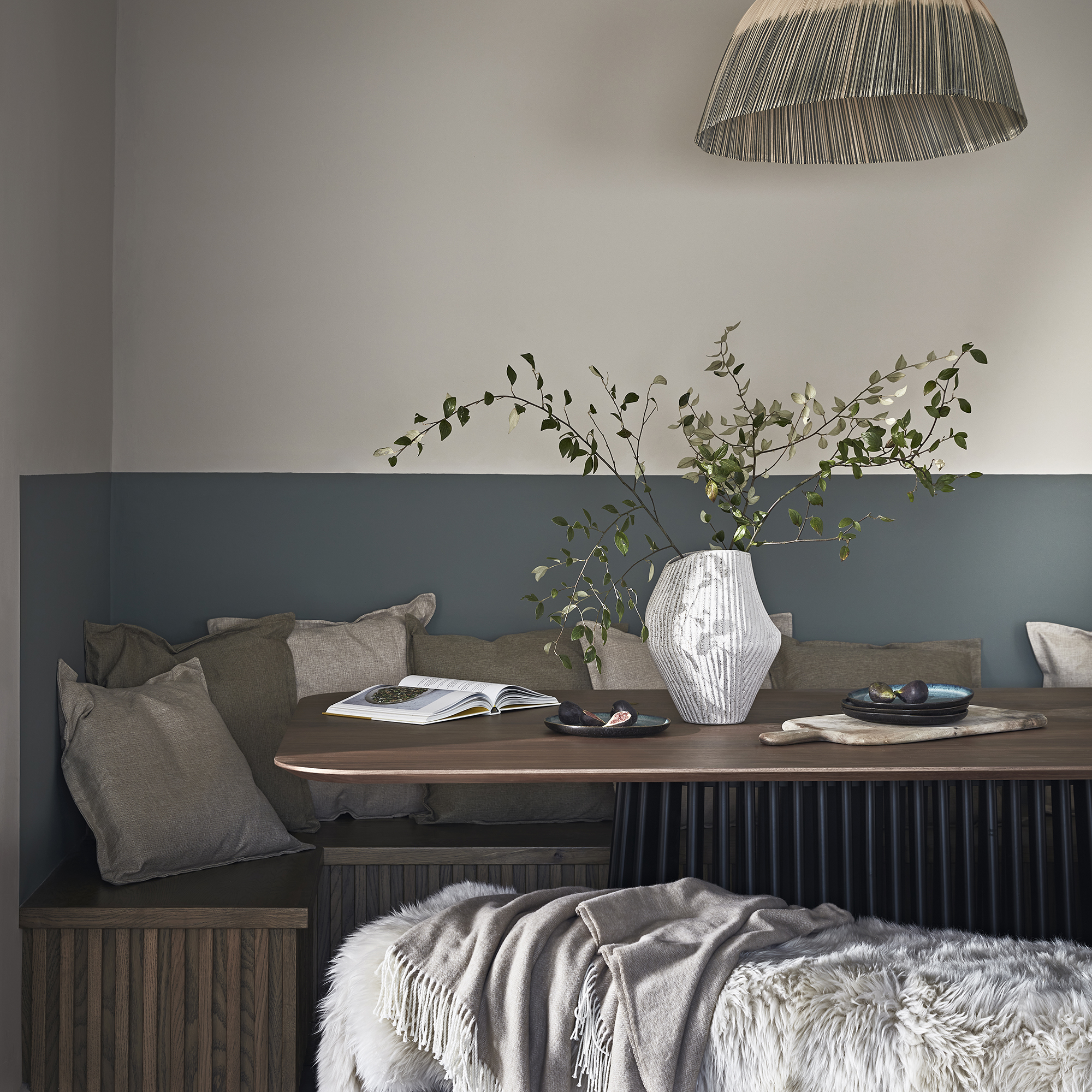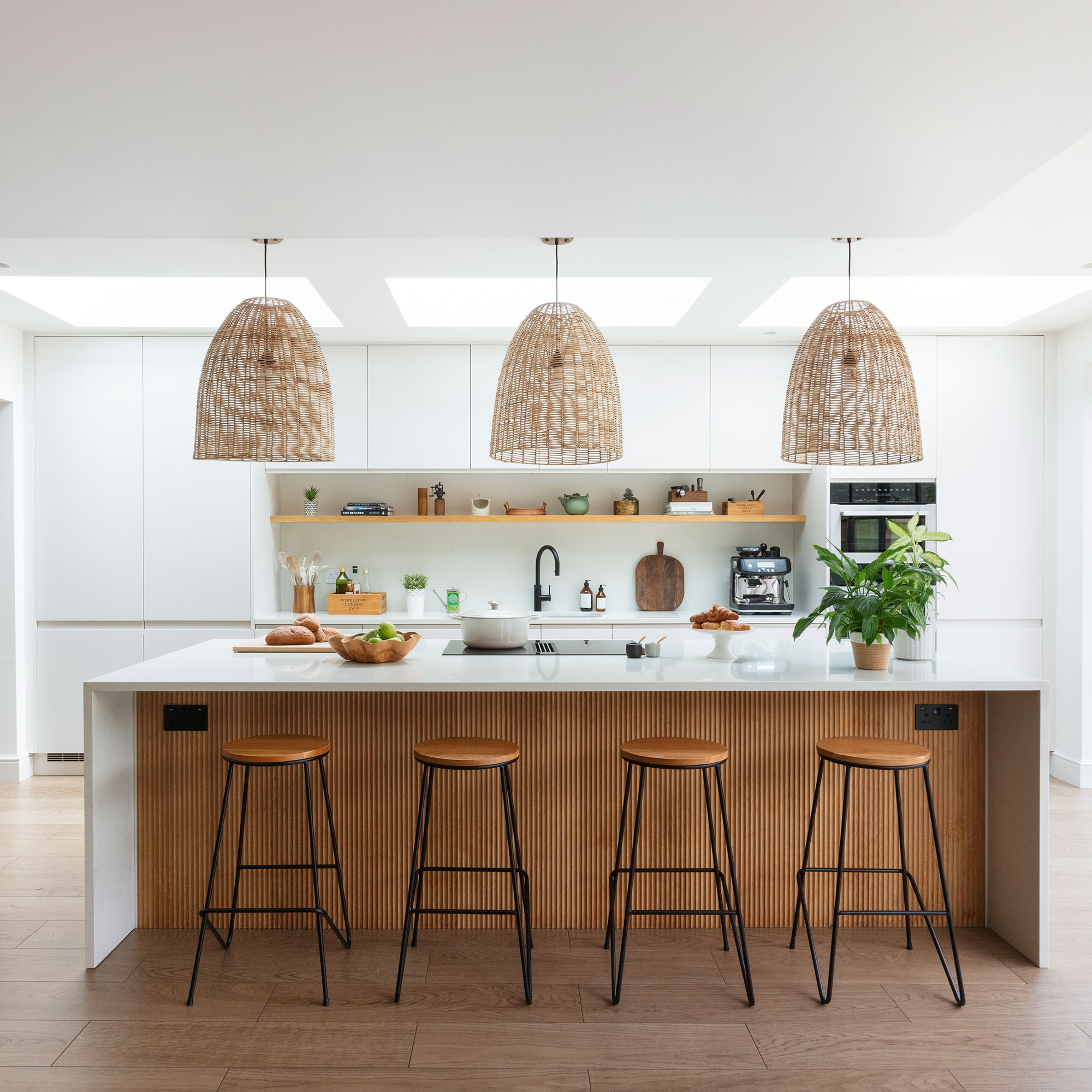3 colours that cause anxiety – avoid these shades in your home to protect your mental wellbeing
Experts reveal the colours associated with negative emotions you don’t need in your life


First, a disclaimer: there is no scientific evidence that colours can directly influence our emotions – say, what colours make us happy – and actually, wouldn't it be exhausting if they did? As experimental psychologist Dr Domicele Jonauskaite says, ‘We live in a world of colour. If every colour made us feel strong emotions, we would experience emotional overload.’
However we do link colours with particular feelings, ideas and linguistic concepts (‘green with envy’, for example). Dr Domicele explains, ‘Ours and other labs’ research shows that colours have consistent and systematic associations with emotions. These associations are similar across different cultures – we tested 73. Research on colour-emotion associations tells us very little about how colours make us feel, though.’
After all, how do you measure feelings? The science is currently limited to comparing how ‘arousing’ we find different colours by measuring changes in heart rate and skin conductivity. However, it’s true to say that colours are a universal language we use to communicate. The power of their associations to affect mood and emotions will vary from person to person depending on their life experience, mental health and personality.

Lee Chambers, a wellbeing consultant, says: ‘For some individuals, the intensity of colours they associate with warnings, such as bright reds and yellows, can draw the attention and incite energy, which for some people may exacerbate anxieties. They can also be overwhelming and emotion-inducing, amplifying feelings of unease.’ Both colours have been shown to trigger hunger as part of a fight-or-flight response – a fact capitalised on by fast food companies like McDonalds and Burger King, who use the colours in their logos, and important to consider when look at paint ideas for your home.
Lee also believes black can contribute to anxiety. He explains, ‘Black evokes a range of emotions, but can create a dark and solemn environment which has the potential to amplify anxiety.’
However, Lee points out that it’s not just single colours that can cause stress. ‘It’s worth considering that some individuals are impacted by the combination of colours, which can cause a level of visual tension that is unsettling.’ Angela Wright, a colour psychologist who devised a system for choosing colour based on years of lab research into our associations between colour and emotions (Colour Affects), advises, ‘To avoid fuelling anxiety, don’t mix black and yellow – they are nature’s danger signal.’ The message here: before settling on the right colour combinations for your rooms, do your research.
Colours that cause anxiety

Colour experts say these are the colours to use carefully in a decorating scheme.
Get the Ideal Home Newsletter
Sign up to our newsletter for style and decor inspiration, house makeovers, project advice and more.
1. Red

A 2020 study by a team of experimental psychologists, Feeling Blue or Seeing Red?, (Domicele Jonauskaite et al) asked test subjects to identify the emotions they linked with colour swatches, as an investigation into colour psychology. One of the strongest responses was to red: ‘In our study,’ wrote the authors, ‘red was associated with positive and negative emotions.’ Seventy-three percent linked it to anger, 68% to love, 51% to hate and 39% to pleasure. The intensity of those feelings can be the trigger.
Karen Haller, a behavioural design consultant, colour specialist and author of bestseller The Little Book of Colour, adds, ‘Too much red can put you into feelings of overwhelm, anxiety and the ‘fight/flight’ response. It’s great when you need some motivation, an energy boost. That could be where you exercise, or your home office where you might need some late-afternoon motivation. But strong and vibrant colours like this can stimulate our emotions, so I always advise my clients that just a splash is enough.’
Joa Studholme, colour curator for Farrow & Ball, disagrees, and thinks it’s the contrast you create by pairing red ideas with another colour that creates the tension: ‘For centuries, reds have been used in reception rooms. Their warmth and depth often makes you feel secure rather than anxious. It’s best to avoid using strong red on the walls with bright white woodwork, however. It’s the strong contrast that makes for a very un-relaxing atmosphere. Better to use a red-based white on the trim or ceiling.’
2. Yellow

Yellow has two sides to its ‘personality’. Angela Wright explains, ‘The right yellow can lift our spirits and our self-esteem; it is the colour of self-confidence and optimism. Too much of it, or the wrong tone in relation to the other tones in a colour scheme, can cause self-esteem to plummet, giving rise to fear and anxiety.’
Karen Haller advises against immersive decorating with a colour this powerful: ‘There is a trend at the moment called "colour drenching" where all the walls, ceiling, door, window frames, everything is painted in the same colour. It might look effective and you might think “wow!” when you see it in a magazine, but really consider if you can live being immersed in that colour and how you’re likely to feel and behave long-term.’
To keep on the right side of yellow, team it with pure white and/or touches of black, or soften it with gentle greys. Done well, it’s clear why it’s one of our top living room paint colours for 2023.
3. Black

As Dr Domicele’s Feeling Blue or Seeing Red? study pointed out, there are many negative associations with black on a linguistic level: ‘black magic’, ‘blackmail’, and so on. Although it also can be ‘triggering notions of sophistication and elegance’ according to the study, it was associated with negative emotions, too. Test subjects linked it to disappointment, hate, sadness, regret, fear and contempt.
Angela Wright elaborates, ‘Black is essentially an absence of light, since no wavelengths are reflected and it can, therefore, be menacing. Many people are afraid of the dark.’ However, she believes it can also be used positively. ‘It communicates absolute clarity, with no fine nuances. It communicates sophistication and works particularly well with white.’ That classic combination is one of the best colours to paint your kitchen, especially large, bright rooms where black can define spaces and absorb light for a cosier feel.

FAQs
What colours cause stress?
‘From a colour psychology perspective, the two main colours that could fuel anxiety the quickest are red and yellow,’ explains Karen Haller, a behavioural design consultant, colour specialist and author of bestseller The Little Book of Colour.
What colours are best for anxiety?
Greens and blues are linked with positive emotions, presumably because we link them to nature – plants, sea and sky. Little Greene’s creative director Ruth Mottershead says, ‘Green creates tranquil, positive spaces that make us feel nurtured, harnessing the calming effects of nature indoors. This restful atmosphere may be exactly what you are seeking in a bedroom or living room.’ Other calming colours for bedrooms include whites, terracotta and soft pinks.

Vanessa Richmond has been a freelance writer, editor and editorial consultant since 2021. Her career in magazines began in 1998 and, apart from a four-year stint at women’s lifestyle magazine Red, it has been spent working on interiors titles including House Beautiful, Country Homes & Interiors and Style at Home. She is a former editor of Ideal Home, Country Homes & Interiors and Style at Home magazines. She has also worked for House Beautiful and Red. During her 25 years as a journalist, she has been a sub-editor, columnist, deputy editor and editor. Now she combines freelance writing with being a secondary-school English teacher.
-
 Will a conservatory add value to your home and how can you maximise it?
Will a conservatory add value to your home and how can you maximise it?This is what the pros say
By Amy Reeves
-
 I’ve been looking for a new signature scent for my home and The White Company's new fragrance is the exact summer holiday smell I needed
I’ve been looking for a new signature scent for my home and The White Company's new fragrance is the exact summer holiday smell I neededSantorini smells fresh, summery and sophisticated
By Kezia Reynolds
-
 How to remove algae from garden walls in five steps – and the cleaning product experts rave about for tackling it fast
How to remove algae from garden walls in five steps – and the cleaning product experts rave about for tackling it fastExperts share their top tips for getting garden walls algae-free
By Katie Sims
-
 Hygge living room ideas — 6 ways to warm up your home with this Danish concept and cosy aesthetic
Hygge living room ideas — 6 ways to warm up your home with this Danish concept and cosy aestheticHunker down until summer finally arrives with these warming ideas
By Rebecca Knight
-

 How to create a sensory home – interiors experts reveal 5 easy ways to style your home and soothe your mind
How to create a sensory home – interiors experts reveal 5 easy ways to style your home and soothe your mindYou can turn any space into a sanctuary by following these simple steps
By Maddie Balcombe
-

 Can displaying family photos at home make you happier? According to research it can — 5 ways to do it in style
Can displaying family photos at home make you happier? According to research it can — 5 ways to do it in styleHarness the mood-boosting power of looking through old photos by displaying your favourites
By Rebecca Knight
-
 How to make a hallway smell incredible without candles - 7 ways to gently fragrance your entranceway
How to make a hallway smell incredible without candles - 7 ways to gently fragrance your entrancewayGo flame-free to safely scent your entryway
By Vanessa Richmond
-
 6 ways I brighten my home in January when the Christmas decorations come down, as an interior stylist
6 ways I brighten my home in January when the Christmas decorations come down, as an interior stylistHelp banish the winter gloom with these uplifting ideas
By Laurie Davidson
-
 Kitchen hacks to encourage healthy eating habits — 7 ways your kitchen can support healthy living
Kitchen hacks to encourage healthy eating habits — 7 ways your kitchen can support healthy livingMake creating healthy changes easy by following these tips
By Eilidh Williams
-
 How to reset your home after Christmas to restore a sense of calm
How to reset your home after Christmas to restore a sense of calmFollow these 7 steps to get back to normal at home and beat post-Christmas blues
By Eilidh Williams
-
 How to make a house look more inviting - 8 ways to quickly boost your house’s appeal in time for Christmas
How to make a house look more inviting - 8 ways to quickly boost your house’s appeal in time for ChristmasMake visitors feel welcome from the second they step foot on your property
By Vanessa Richmond